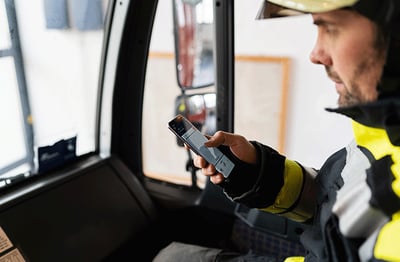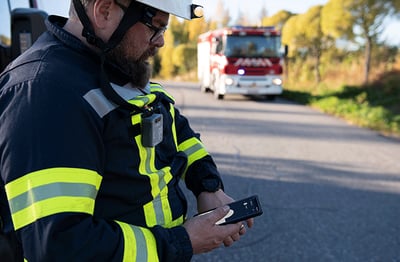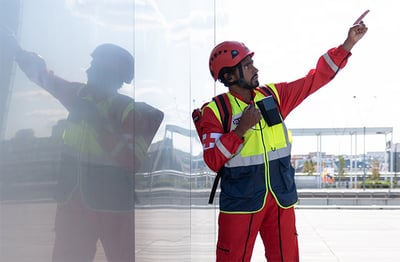Users are increasingly ready for secure, professional and even cloud-based apps to be part of their operations. This is one of the notable trends revealed by Airbus’ latest survey into the professional apps market. What else did the survey find?
The fifth annual mobile apps survey report details the latest professional mobile apps trends across the globe. With the data from all five reports at our fingertips, we couldn't help but dive in and compare the results. Check the revealing statistics from the Airbus survey on professional app users 2020 and how the numbers compare to previous years.
1 - A higher percentage of professionals use mobile apps
The survey asked if user organizations are already using apps in daily operations. Around 90% answered ‘yes’ – a 12% increase on 2018 when this question was asked for the first time.
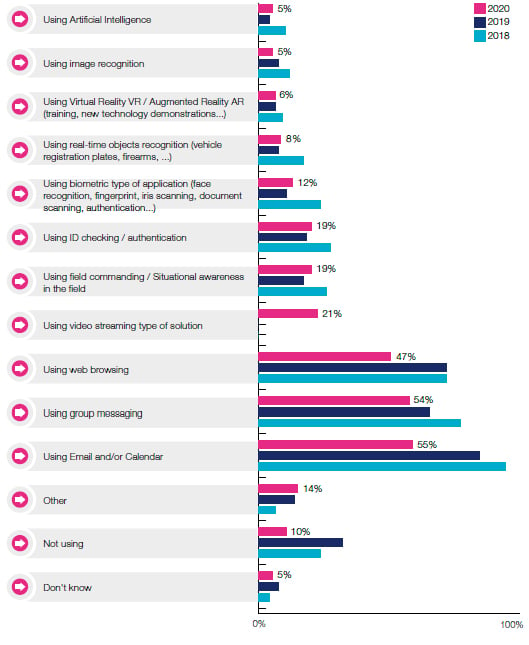 As a follow-up question, the respondents were also asked which apps they used. Email and/or calendar, group messaging and web browsing have been the most commonly used apps for the past three years. But around one in five said they used a ‘video streaming type of solution’ – which was a new response option this year.
As a follow-up question, the respondents were also asked which apps they used. Email and/or calendar, group messaging and web browsing have been the most commonly used apps for the past three years. But around one in five said they used a ‘video streaming type of solution’ – which was a new response option this year.
2 - Professional organizations are open to cloud-based apps/services
When asked if organizations were already using mission- or business-critical cloud-based applications (the so called software as a service, SaaS, model), more than a quarter of the respondents answered ‘yes’.
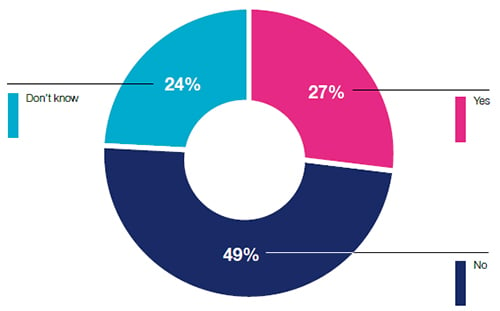
The respondents who answered ‘no’ or ‘don’t know’ got a follow-up question: How likely did they find it that their organization would use mission or business-critical cloud-based applications (SaaS) in the future? Around half (52%) thought that their organization was likely to use cloud-based apps in the future, and only around one-fifth (18%) thought it unlikely.
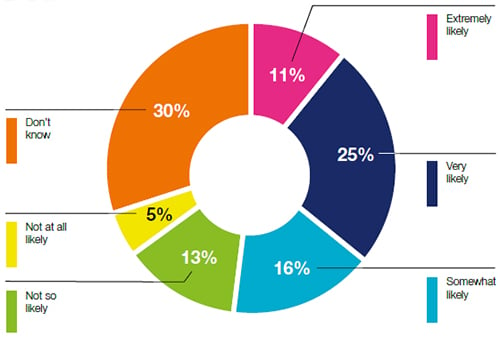
These were new questions, so we cannot identify a trend. However, these findings indicate that organizations are open to the potential of services delivered via the cloud.
3 - Apps adoption is becoming more structured
Although the majority of participants (69%) personally downloaded apps to their device from generic app stores, this shows a 7% decrease from last year, when we asked this question for the first time.
Around a third (30%) reported using the organization’s app store, or that their organization pushes applications to devices, or that their IT/IM department takes responsibility for downloads – an 8% increase on last year.
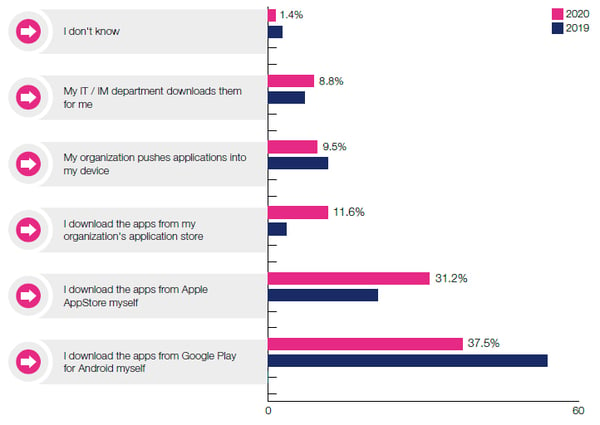
In other words, it seems that, although most users download apps from generic app stores, there is a trend towards a more structured approach to adopting apps.
4 - Professional apps market is becoming more mature
The survey asked respondents about their organization’s plans to introduce apps in the future.
Around half of participants (49%) reported either no plans to adopt new apps, or no knowledge of plans. However, almost a quarter have decided to start a small-scale trial project or introduce new mobile apps in the next 12 or 24 months – an 8% increase compared to last year.
Also, around 10% fewer compared to 2016 are considering the adoption of apps without concrete plans.
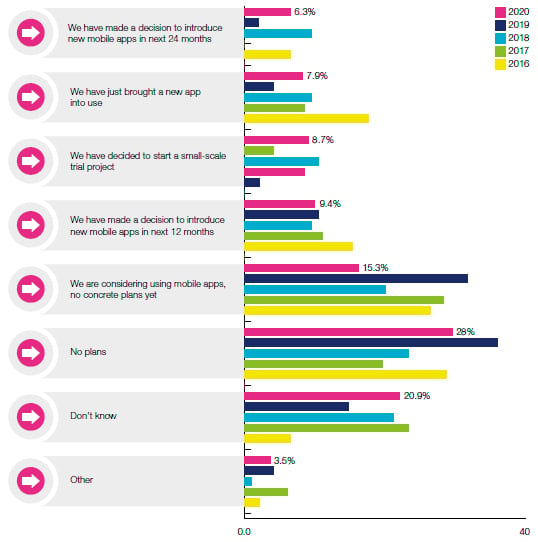
Combine these findings with the known increase in the percentage of respondents who report downloading their apps in a more controlled way, and the trend is clear: the professional apps market is becoming more mature.
5 - Key use cases: same, but new technologies emerging
People were also asked to choose three use cases for mobile apps that had the greatest potential. Group messaging, email/calendar and field command/situational awareness in the field received the most mentions, as they have done throughout the survey’s history. The support for group messaging and email/calendar is even increasing.
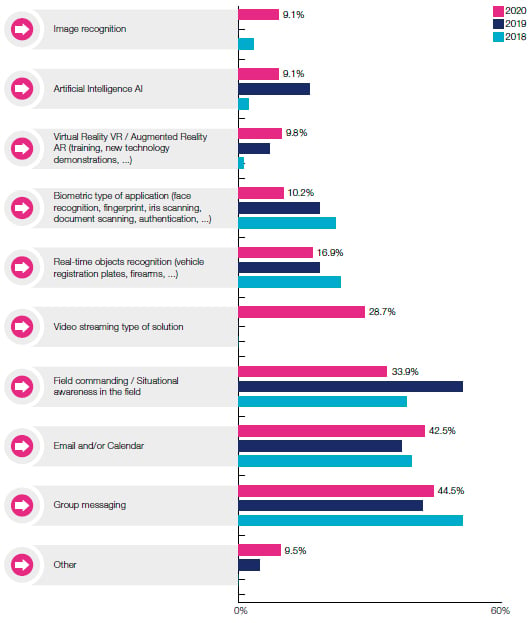
As a new response option this year, ‘video streaming type of solution’ was selected by 29% of respondents. In addition, 10% of respondents checked the VR/AR box while only 1% mentioned it in 2018. These numbers indicate that new technologies, such as VR/AR and AI, are gradually emerging.
6 - No change in the most important app characteristics
The top three characteristics of mobile apps that professional users value most have remained constant throughout the survey’s history: security and ownership of data, high reliability and availability of service, and ease of use.
Security is becoming ever-more important, chosen this time by 71% of respondents. This is the highest percentage in the survey’s history. High reliability and availability of service has also been following an upward trend: from 54% in 2016, to 63% this year.
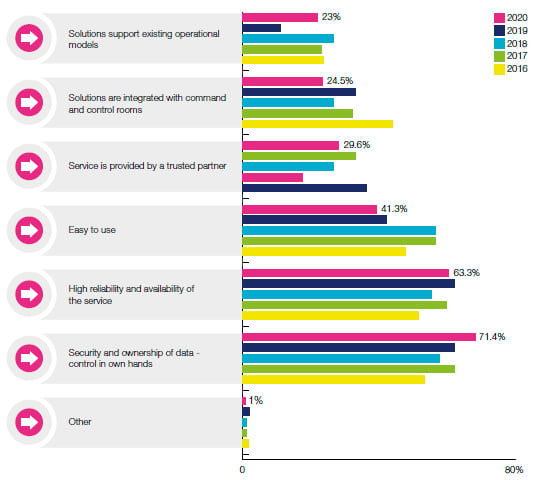
Interestingly, these top two requirements are very different from those of mass market consumers, who tend not to think about data ownership.
But these were just a few of the findings from the 2020 global survey on the professional apps market. You can discover the other nine trends when you download the survey report:
Updated contents for you:
You are welcome to download all reports and make further analyses:
- Professional app trends 2022
- Where are professional apps heading? (2021)
- Fingertip access to the latest trends in professional apps (2020)
- Professional apps – what do users need right now? (2019)
- Users look for secure professional apps (2018)
- Demanding more from professional apps (2017)
- The future for professional mobile apps (2016)


